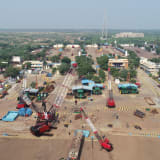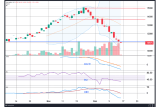
Could we see a repeat of Brazilian Congestion?
In the second half of last year, congestion for Panamax and geared vessels off Brazil reached a record high. At its peak in mid-October, the combined total was close to 270 vessels, nearly three times normal seasonal levels. These vessels were primarily waiting to load corn, soybeans, and sugar.
Panamax vessels were the most impacted, with peak congestion in mid-October equating to around 6% of the Panamax fleet waiting to load. Geared vessels were also impacted, with just over 1% in the queue at the same time. This tie-up of vessels supported earnings in the second half of 2023, but also suppressed earnings in the first quarter of 2024 as the queue of vessels was unwound back into the market.
There were multiple contributing factors to the high level of congestion seen in 2H23, some of which may occur again in the coming year.

Operations in Northern Ports Hit by Drought
In recent years, Brazil has increased the share of grain and other agricultural exports via its northern ports, from less than 15% in 2016 to 30% in 2022. Around half of the cargo transported to these northern ports uses river waterways, which is a lower-cost option compared to trucking. This has helped the competitiveness of regional grain prices, undercutting USG supplies. However, the rapid rise in Brazil’s total export volumes has caused ports to operate at close to full capacity which, combined with greater reliance on inland waterways, creates vulnerability for the country’s export logistics as climate factors become increasingly uncertain.
The severe drought in the north of Brazil and subsequent low river water levels around October had two effects: 1) A shift of export volumes, on the margin, from northern ports to the already busy southern ports and 2) Delays in barging and cargo availability in the north, leading to longer waiting times for loading. While total grain and agricultural exports rose more than 35% year-on-year in 4Q23, the share exported from northern ports declined 4 percentage points to 22%.

Knock-on Effects at Southern Ports
While the volume of cargo that was redirected south was modest (in the order of 1Mt according to USDA), this shift further increased pressure on southern ports amid record agricultural export volumes.
The chart to the right demonstrates the changes in cargo handling time (the time between the start of loading operations and sailing from the port) at the southern port of Santos, Brazil’s largest agricultural export port, against monthly average rainfall in the state of São Paulo. Adverse weather in October further slowed loading operations in the south, compounding congestion due to the lower port efficiency.

Record Exports and Seasonality
As the chart of combined soybean, corn, and sugar exports demonstrates, despite record volumes, exports in 2023 generally followed the seasonal trend until the second half of the year. Soybean exports typically begin to wind down mid-year, allowing for volumes of corn and sugar to be exported. However, in 2023, the strong growth in soybean volumes meant that the commodity continued to be exported into the second half. One contributing factor was the decline in international grain prices, which contributed to slower forward sales as farmers delayed selling, with the Brazil Paranagua FOB price more than $100/t lower than the year before at an average of $517/t in 2023.

Outlook for the Second Half
While the IGC currently forecasts another record year for Brazilian soybean exports in 2024/25 (Oct/Sep), +1.8 Mt year-on-year to 100.6 Mt, the expected 9.4 Mt year-on-year decline in corn exports to 43.7 Mt (Jul/Jun) should lessen pressure on logistics. Similarly, the USDA forecasts a 1.5 Mt year-on-year decline in sugar exports to 34.5 Mt (Apr/Mar), which have maintained a good pace of export so far this year. A partial recovery this year from other major exporters, namely Argentina and the US, should also diversify some global volumes away from Brazil’s export infrastructure, subject to price competitiveness.
On the flip side, river water levels at one of the main tributaries to the Amazon, Rio Negro, are still seasonally weaker than last year. Accordingly, barging operations may again be affected this year, as cumulative rainfall in the north of Brazil continues to track below the preceding five years, Refinitiv data show.
All told, though, these issues are less likely to compound to the same level as last year.
*Ports south of Recife are considered southern.
By Cara Hatton, Dry Bulk Analyst, Research.
Articles
You may also be
interested in
View allGet in touch
Contact us today to find out how our expert team can support your business















